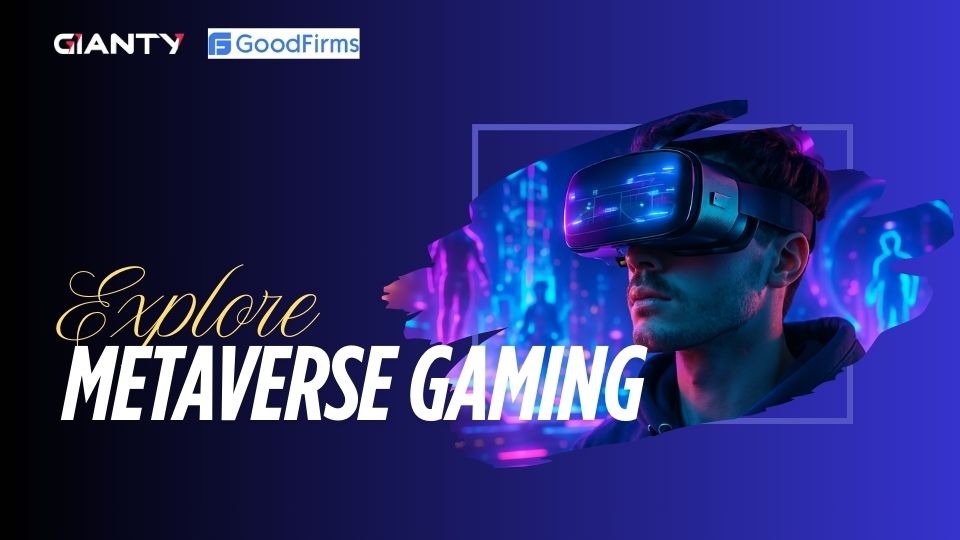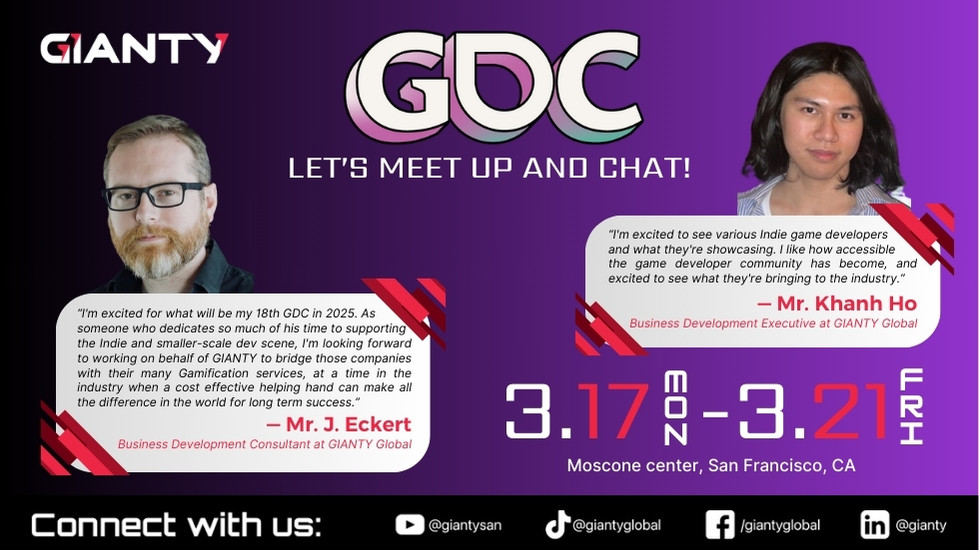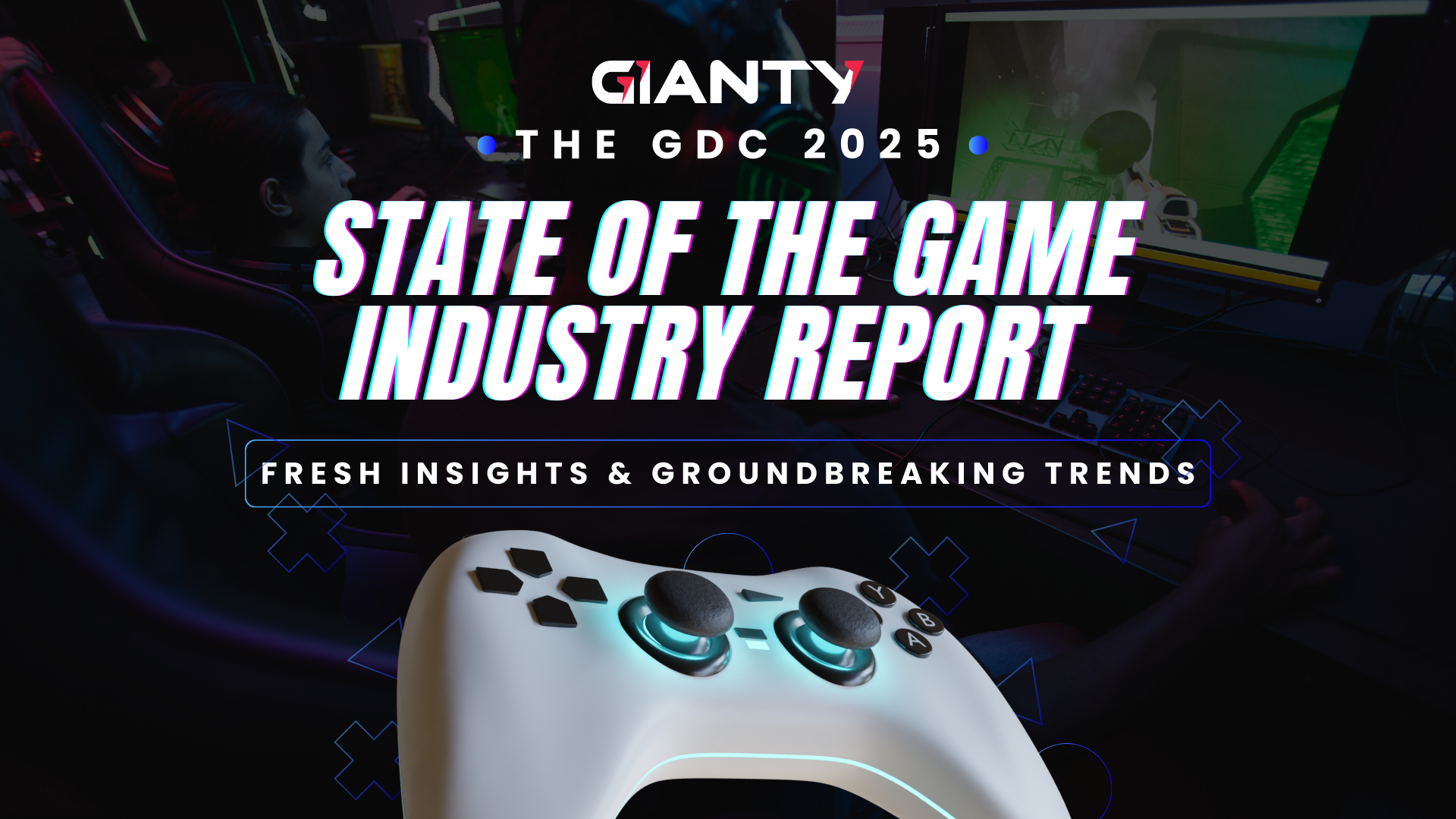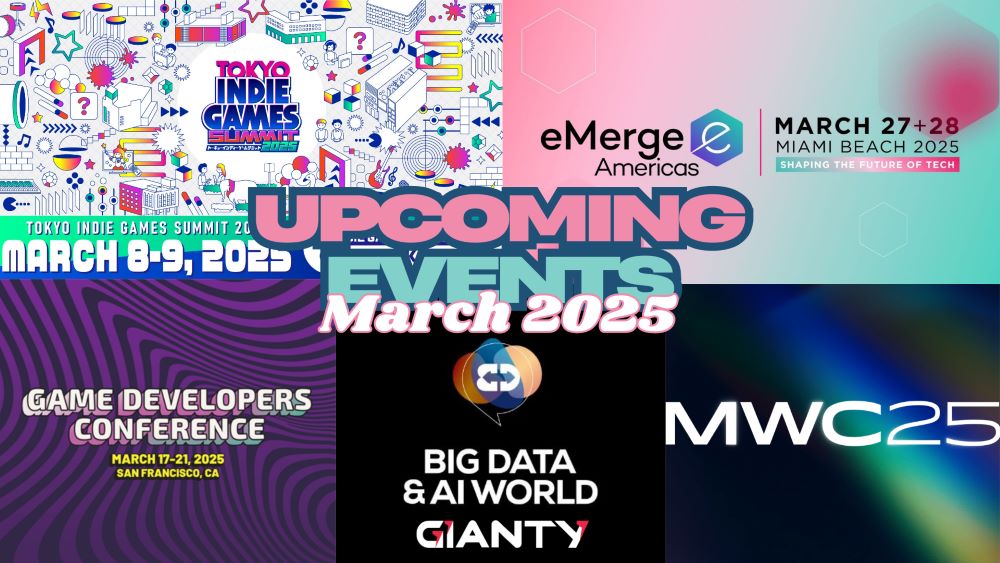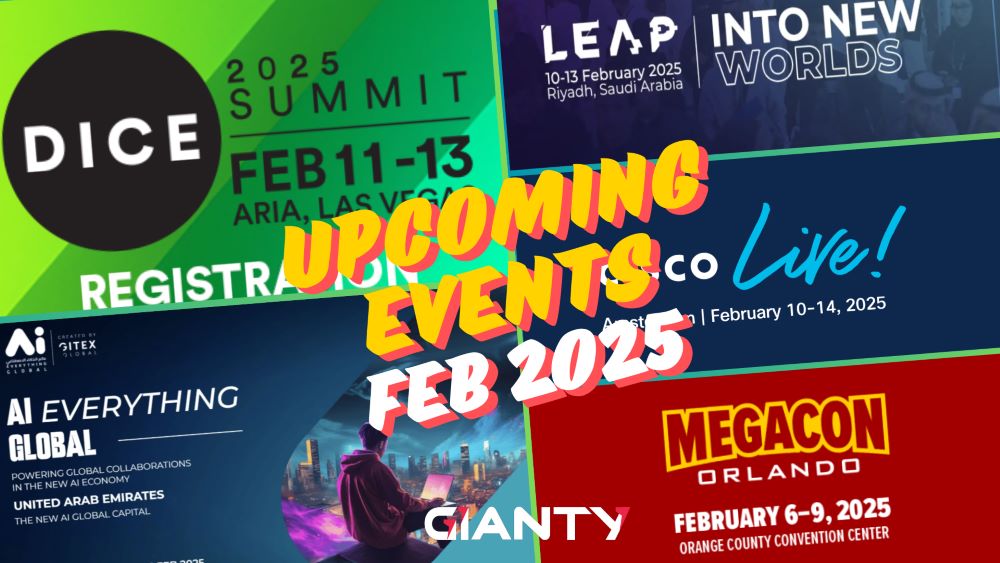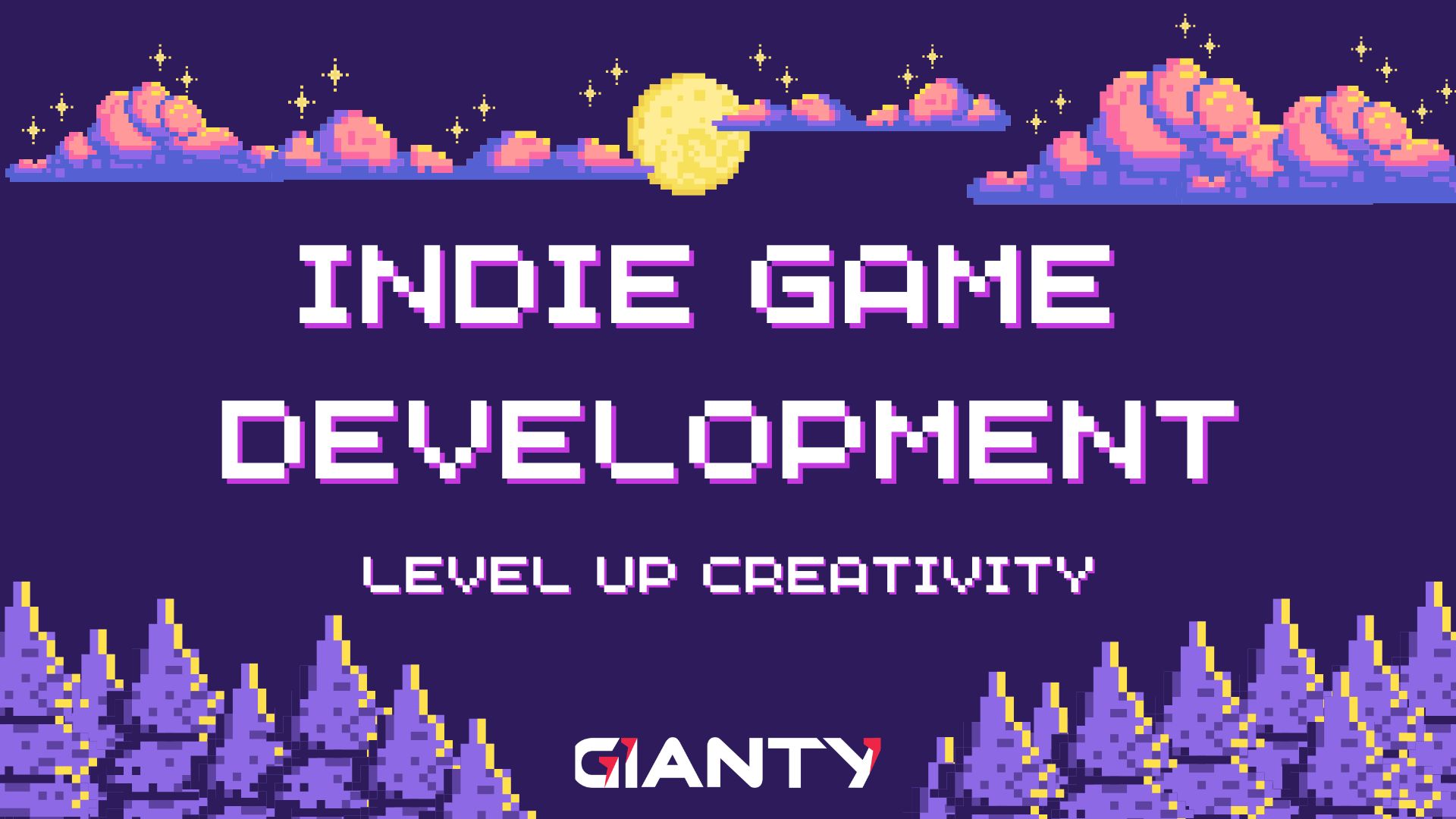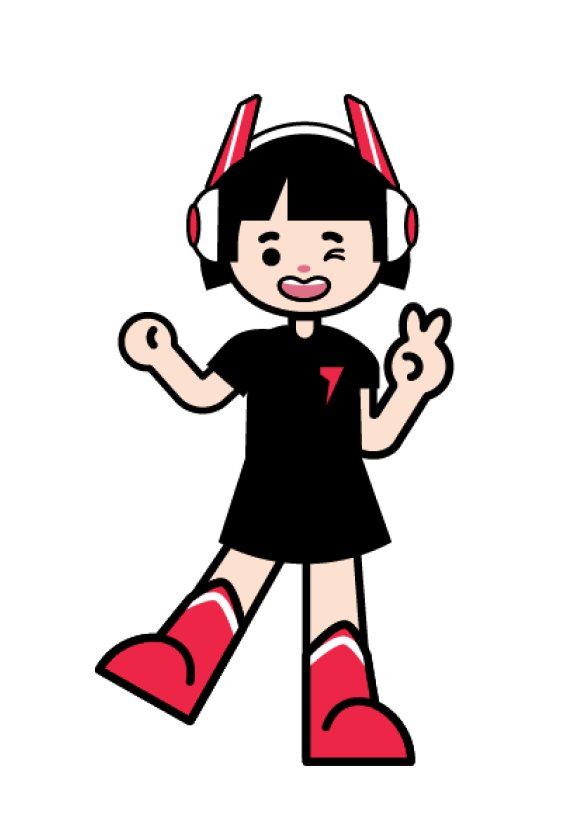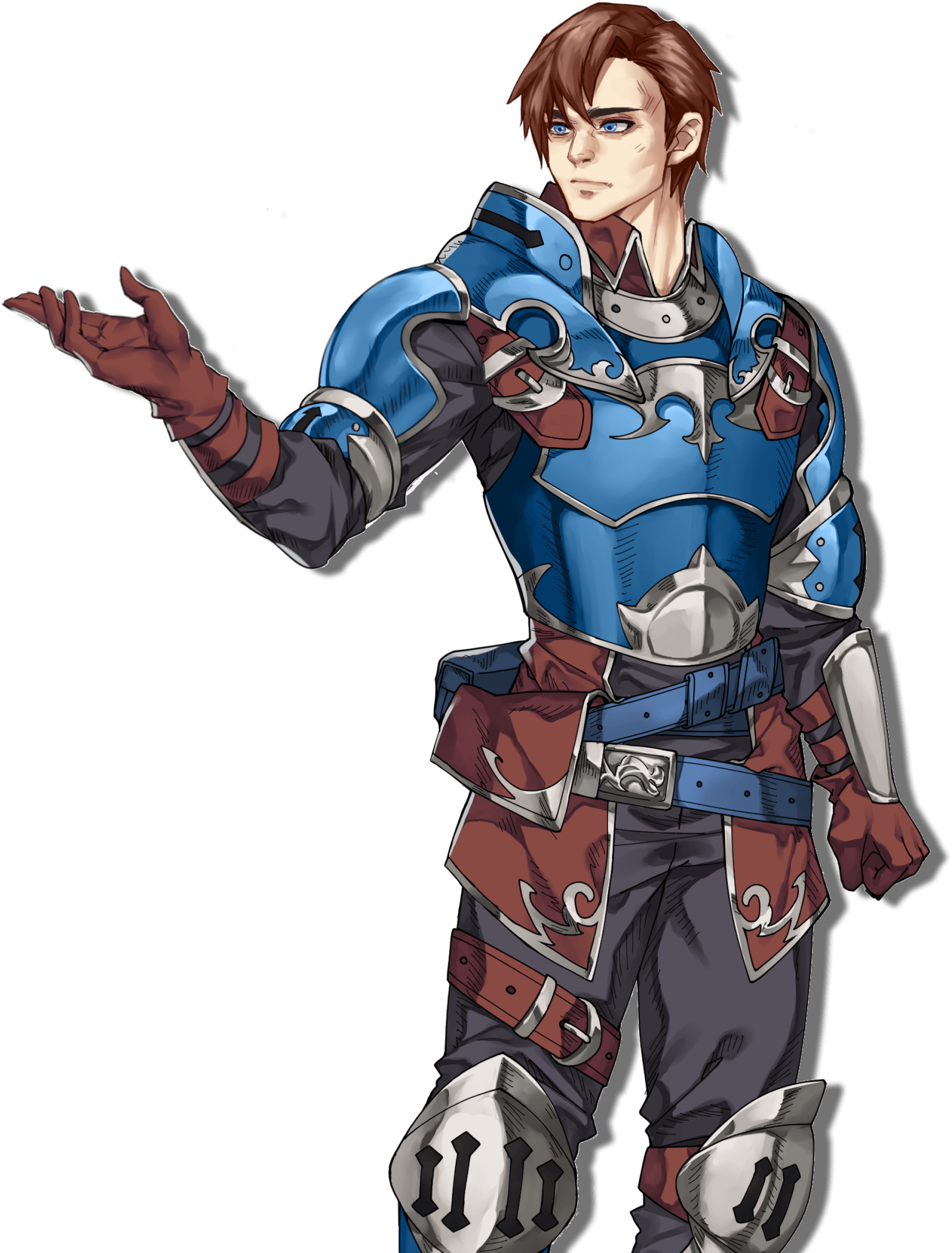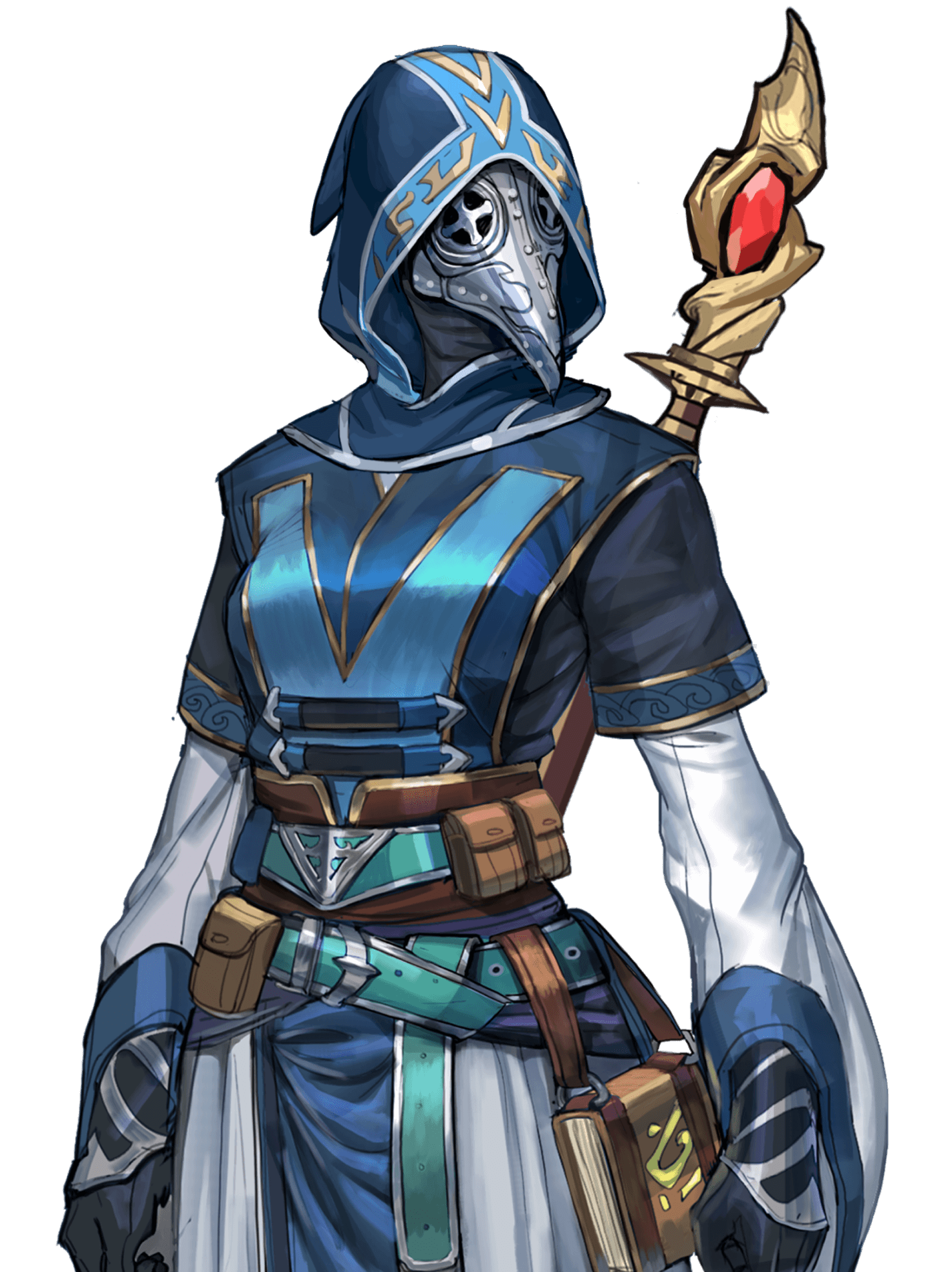In the dynamic world of game development, creating captivating characters is at the core of any successful game or animated project. At GIANTY, we understand the power of compelling character concept art and how it can elevate the entire experience for the audience.
In this blog post, we will delve into the world of character concept art, exploring its importance, the steps involved in crafting unique character concept art, and how to effectively outsource this crucial aspect of development. This guide will provide valuable insights to help you bring your characters to life.
What is character concept art
Character concept art is the visual representation of a character’s design, created during the early stages of the development process in various creative industries, such as gaming, animation, and film.
This art form serves as a blueprint, guiding the physical appearance and personality of the character throughout the production process. It involves illustrating the character’s appearance, including their attire, physical features, expressions, and any distinguishing traits.
Character concept art serves as a roadmap for the later stages of production. It ensures that the creative team shares a unified vision of the character, facilitating a smoother production workflow.
What is character design
The terms “character design” and “character concept art” are often used interchangeably, but there’s a subtle difference.
Character design is the process of developing the final, refined version of a character for use in a project. While character concept art represents preliminary sketches and ideas, character design results in a detailed and polished look that is ready for animation and further production.
Character designers use their creativity and storytelling skills to bring characters to life, making them relatable, engaging, and memorable for the audience. Effective character design balances aesthetics and functionality, ensuring that the character fits seamlessly within the narrative and the world they inhabit.
How to make character concept art
Creating character concept art is a multi-step process that demands creativity, research, and technical skills. In this guide, we will explore the steps involved in crafting captivating character concept art, covering everything from gathering references to delivering a finalized concept.
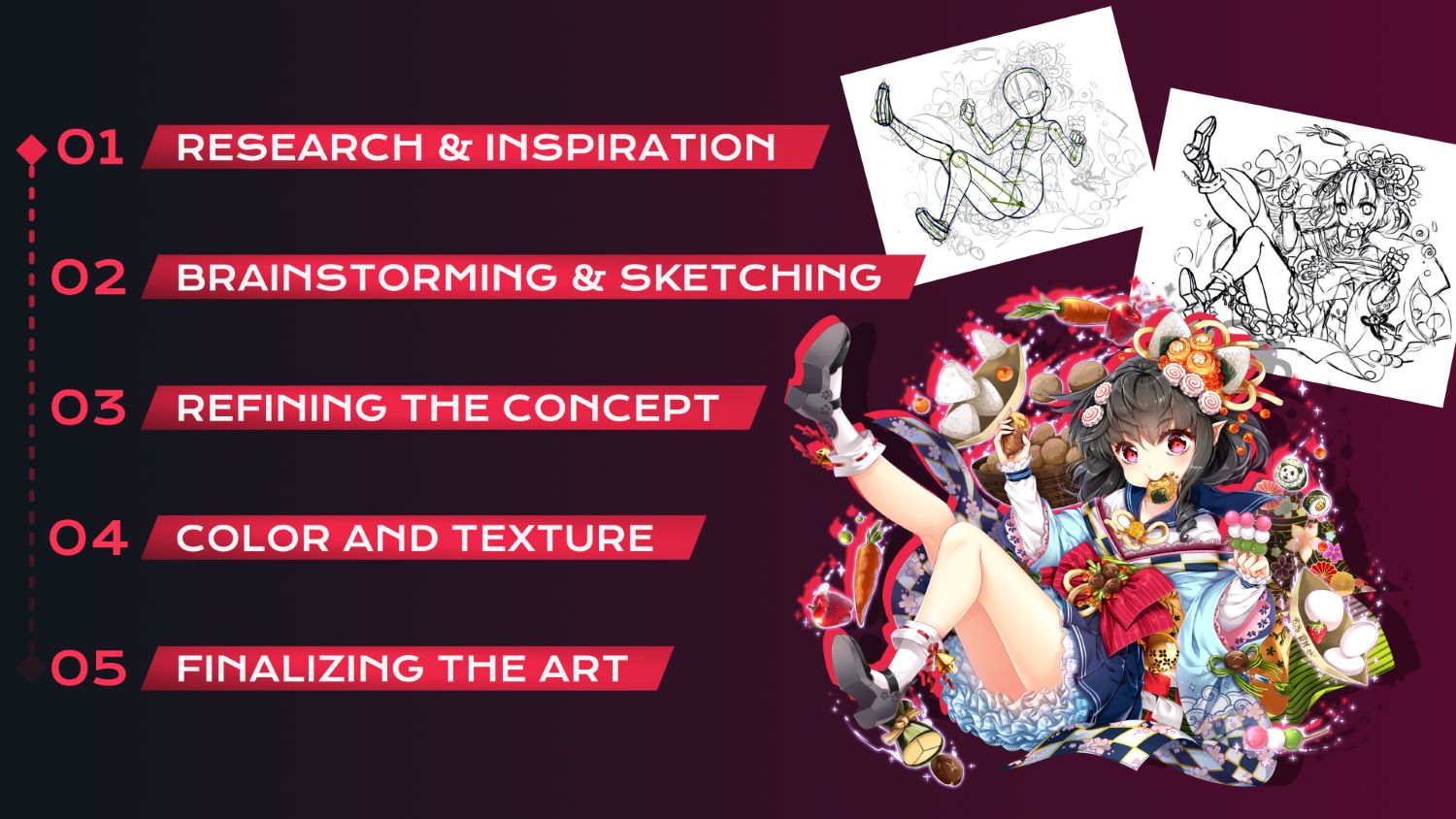
1. Research and Inspiration
- To begin, immerse yourself completely in the theme and style of your project. Collaborate closely with art directors to gain a thorough understanding of the future product, its theme, and its style.
- Gather references and conduct comprehensive research to help you form a clear mental image of your character. Draw inspiration from existing characters and ideas by exploring various sources such as movies, books, nature, and other artworks. This will help you identify the artistic styles that best capture the essence of your character.
2. Brainstorming and Sketching
- With a clear understanding of your character’s personality and some inspiration in hand, start with rough sketches to explore different ideas. Utilize resources like Pinterest or other free art collections for additional inspiration.
- This phase is all about experimentation and finding a direction. Explore various looks, poses, and expressions, and allow your creativity to flow freely without hesitation. Don’t be afraid to try different approaches and push the boundaries of your imagination.
3. Refining the Concept
- From your preliminary sketches, select the most promising elements and begin refining your character’s appearance.
- Add details such as clothing, accessories, and facial features, keeping in mind how the character’s personality influences their look. These details are essential in giving your characters individuality and making them memorable.
4. Color and Texture
- Once you’ve honed in on a specific concept, add color to your character concept art. This step helps in visualizing how the character will look in different scenarios and lighting conditions. Choose a color palette that compliments the character’s personality and backstory.
- Don’t forget to incorporate finer details, such as textures, patterns, and accessories, to enhance the overall visual appeal. Whether you use traditional pens or digital tools, adding color will make your characters visually striking and appealing.
5. Finalizing the Art
- Create a polished version of the character concept, including multiple views (front, side, back) and various expressions to provide a comprehensive guide for the production team. These different perspectives will help other artists, animators, and designers maintain consistency throughout the character’s portrayal.
- Add shadows to give depth for your characters, enhancing their realism. Use brushstrokes and techniques to craft a beautiful composition that truly brings your character to life.
Example of character concept art
To better understand the process, let’s consider an example of a character in our Ayakashi IP:
Initial Sketches
The initial sketch provided showcases the basic structure and pose of the character, with emphasis on dynamic movement and balanced proportions. The pose is playful and whimsical, capturing her cheerful and vibrant nature. The sketch uses simple geometric shapes to map out her proportions and overall stance.
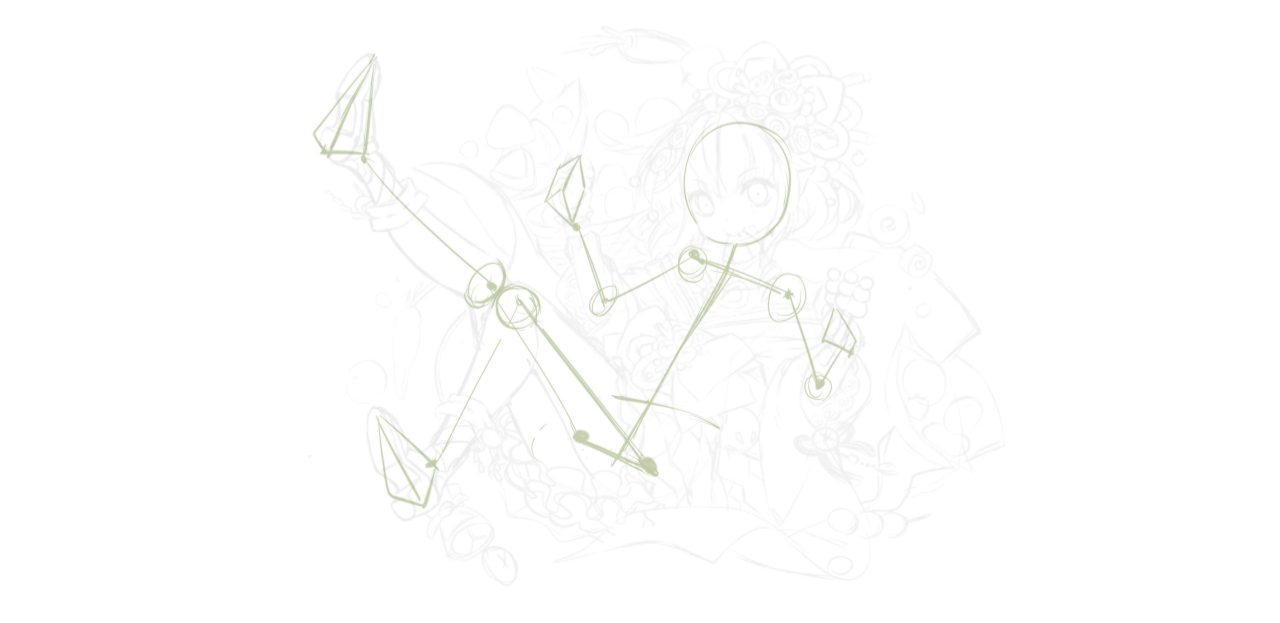
Reference Gathering
To enrich character’s design, we gathered various references that align with her character:
- Traditional Japanese Kimonos: These references help in designing her attire, ensuring it is both traditional and fantastical.
- Modern and Fantasy Accessories: Inspirations from contemporary fashion and fantasy elements to create unique and appealing accessories.
- Food and Nature: Items like dango (sweet rice dumplings), mochi, apples, and vegetables are incorporated into her design to emphasize her connection to nature and the season of spring.
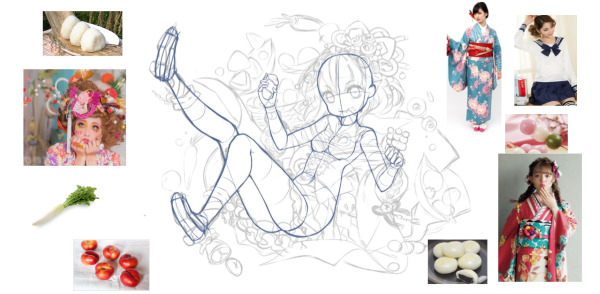
Refinement
Add finer details to the clothing, accessories, and facial features. Ensure that each element aligns with the personality and story.
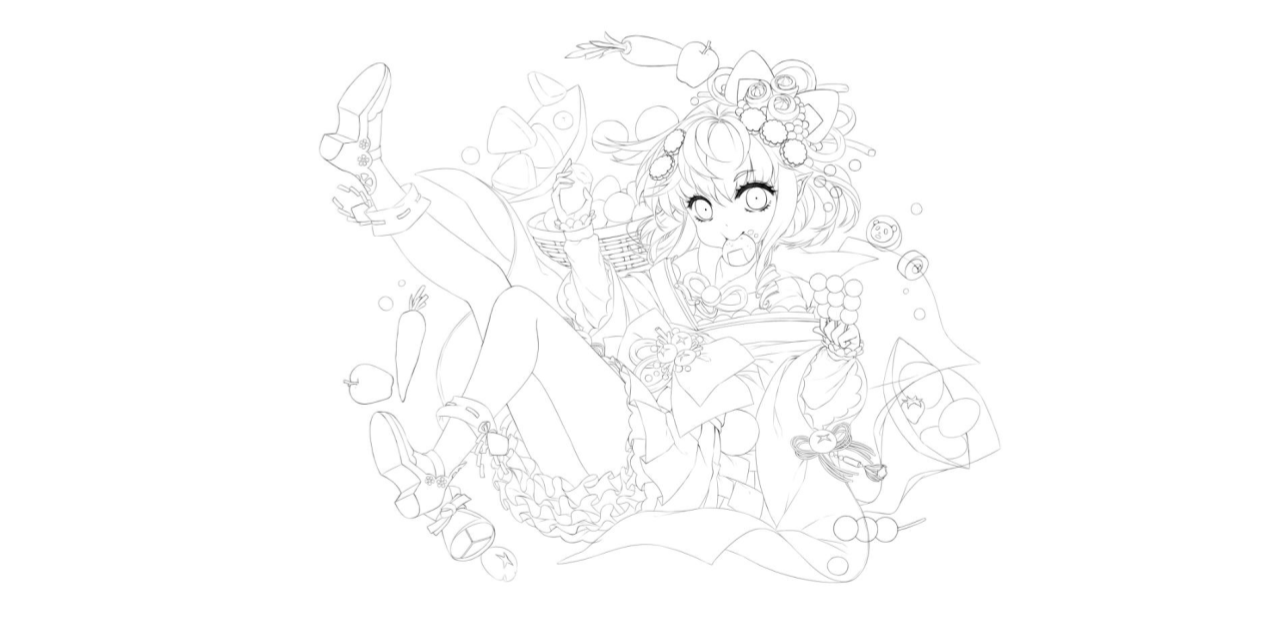
Color and Texture
Use digital tools or traditional media to add color, making sure the palette complements the character and story.
Final Art
Add final touches like glowing effects around flowers and gentle highlights to enhance the character.
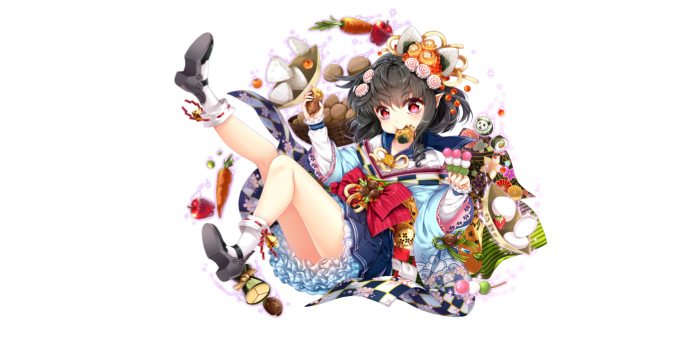
How to outsource character concept art development
If you lack artistic skills or prefer a professional touch for your character concept art, outsourcing can be a great solution. By hiring experienced artists and illustrators, you can ensure high-quality results while bringing fresh perspectives and expertise to your project. Here’s how you can successfully outsource character concept art development
Define Your Needs
Clearly outline the requirements, including the style, number of characters, and deadlines. Provide a detailed brief with references and descriptions. Be as specific as possible to avoid misunderstandings.
Research and Select Artists
- Freelance Platforms: Websites like ArtStation, Behance, and Upwork are excellent places to find talented freelance artists with strong portfolios in character design.
- Art Communities: Join online art communities and forums to connect with artists who specialize in character concept art.
- Specialized Studios: Consider hiring specialized concept art studios that have a proven track record of delivering high-quality character designs.
Communication
- Clear Communication: Maintain clear and constant communication with the artist. Regular updates and feedback loops are essential to ensure the artist’s work aligns with your vision.
- Feedback: Provide constructive feedback throughout the process. Be specific about what you like and what needs improvement to guide the artist effectively.
Contracts and Agreements
- Scope of Work: Clearly define the scope of work, including deliverables, timelines, and milestones.
- Payment Terms: Agree on payment terms, including rates, payment schedule, and any additional costs.
- Intellectual Property Rights: Ensure that the contract outlines the ownership of the artwork and any rights to use, modify, or distribute the art. This protects both parties and sets clear expectations.
Review and Iterate
- Draft Reviews: Review the initial drafts and provide detailed feedback. Be open to iterations and revisions to refine the design.
- Final Approval: Ensure that the final artwork meets your expectations before final release
Outsourcing character concept art can be a cost-effective and efficient way to enhance your project with professional artistry. By following these steps, you can collaborate successfully with talented artists and bring your characters to life.
The cost of outsourcing character concept art can vary widely depending on the complexity of the design, the experience and reputation of the artist, and the scope of the project.
Freelance artists might charge anywhere from $100 to $1,000 per character, depending on their level of expertise and the detail required. Specialized concept art studios might have higher rates, often ranging from $1,000 to $5,000 per character, reflecting their comprehensive services and higher production values.
It’s essential to balance your budget with the quality you seek, ensuring that the investment aligns with your project’s overall goals and expectations.
Conclusion
Creating character concept art is a vital part of the storytelling and game development process. From initial sketches to final polished designs, each step requires creativity, research, and technical skills. Whether you’re developing characters in-house or outsourcing to professional artists, having a clear vision and maintaining open communication are key to success.
About GIANTY
GIANTY is a leading creative studio specializing in game development, animation, and digital art. With a passion for storytelling and innovation, we bring characters and worlds to life through our expertise in concept art, design, and production.
Our team of talented artists and developers collaborates closely with clients to deliver high-quality, engaging content that captivates audiences. Whether you’re looking to develop a new game, create stunning animations, or design memorable characters, GIANTY is your go-to partner for all your creative needs.
At GIANTY, we understand the importance of compelling character concept art. We are here to help you achieve your vision and captivate your audience.
For more information about our services and portfolio, visit GIANTY.



